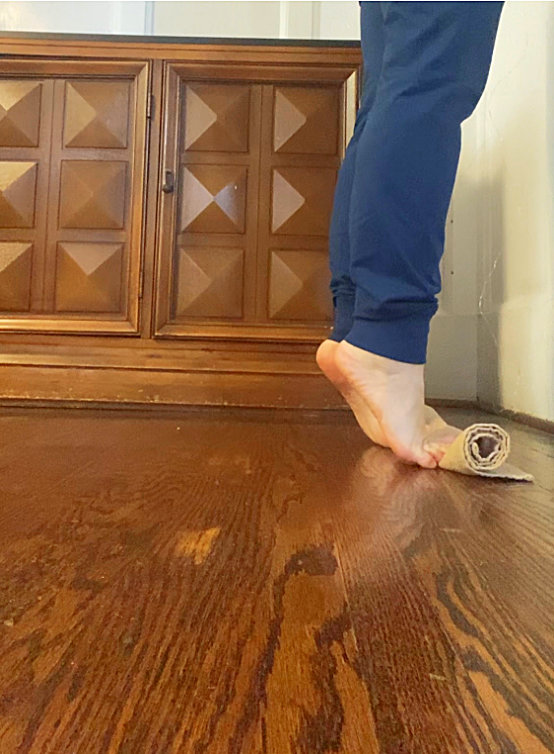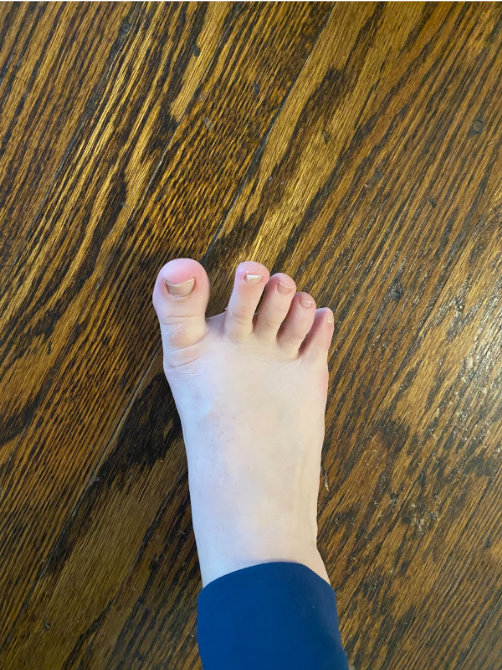by Brittany Kafka, Registered Physiotherapist
Plantar fasciitis is one of the most common causes of heel pain, particularly affecting people who spend a lot of time on their feet. Whether you’re an athlete, someone who stands for long hours, or even just dealing with a recent increase in physical activity, plantar fasciitis can be a frustrating condition that can significantly impact←your mobility and quality of life.
What is Plantar Fasciitis?
Plantar fasciitis refers to the inflammation of the plantar fascia, a thick band of tissue that runs along the bottom of your foot, connecting your heel bone to your toes. Its primary function is to support the arch of your foot and absorb the shock created when you walk, run, or stand.
When this tissue becomes irritated or overstretched, it can result in pain—often felt as a sharp, stabbing sensation in the heel, especially with the first steps in the morning or after long periods of rest. The pain typically occurs at the point where the plantar fascia attaches to the heel bone, although it can also radiate toward the arch of the foot.
What Causes Plantar Fasciitis?
The causes of plantar fasciitis are varied, but the most common risk factors include:
- Overuse or repetitive stress: Activities that put excessive pressure on the feet (running, jumping, or long periods of standing) can strain the plantar fascia.
- Poor footwear: Shoes that lack proper arch support or cushioning can exacerbate the condition.
- Foot mechanics: Flat feet, high arches, or abnormal gait patterns can increase strain on the plantar fascia.
- Tight calves and Achilles tendon: Limited flexibility in the calves and Achilles tendon can alter the mechanics of the foot and increase tension on the plantar fascia.
Symptoms of Plantar Fasciitis
- Heel pain that’s typically worse with the first steps of the day or after prolonged inactivity.
- Pain after standing for long periods or after excessive walking or running.
- Stiffness and tenderness in the heel, particularly in the morning.
- Swelling or warmth around the heel (though this is not always present).
Strengthening Exercises for Plantar Fasciitis
A combination of stretching and strengthening exercises can help alleviate the symptoms of plantar fasciitis and promote healing. Below are three simple yet effective strengthening exercises to include in your routine. Remember to perform these exercises gradually, especially if you’re experiencing pain.
1. Calf Raises with a Towel Under the Toes


This variation of the traditional calf raise helps to target the calf muscles while also improving foot mobility and strength, especially in the muscles that support the arch of the foot. The towel under the toes helps stretch and activate the plantar fascia, which is particularly beneficial for -people dealing with plantar fasciitis.
How to Perform:
Starting Position: Stand with your feet flat on the floor, hip-width apart, and place a small towel (a hand towel works well) or cloth under the toes of both feet.
Movement:
- Keeping your toes firmly on the towel, lift your heels off the ground, standing on the balls of your feet. Make sure to engage your calf muscles (the gastrocnemius and soleus muscles) as you raise your heels.
- Hold the top position for 1–2 seconds, feeling the stretch through the toes and the arch of the foot.
- Slowly lower your heels back down to the floor, maintaining tension in the toes and keeping the towel under your feet.
Repetitions: Perform 2–3 sets of 10–15 repetitions.
2. Toe Extension & Abduction Combined

This exercise strengthens the muscles responsible for toe movement and foot alignment, focusing on the ability to extend and spread the toes. The combination of extension (lifting the toes) and abduction (spreading the toes apart) challenges the intrinsic muscles of the foot and helps improve overall foot mobility and function.
How to Perform:
Starting Position: Sit with your legs extended in front of you or stand while balancing on your heels.
Movement:
- Begin by lifting all your toes upward (toe extension), as if you’re trying to reach the ceiling with your toes. Make sure to lift the toes without curling them downward or using your arch to assist.
- While holding the toe extension, try to spread your toes apart (toe abduction). Aim to separate the big toe from the other toes while simultaneously spreading the other toes as far apart as possible.
- Hold the extended and abducted position for 3–5 seconds.
- Slowly relax your toes and repeat the movement.
Repetitions: Perform 2–3 sets of 10–15 repetitions.
3. Ankle Inversion with a Band


Ankle inversion is a movement that helps strengthen the muscles on the outside of the lower leg and the foot, specifically targeting the tibialis posterior muscle. Using a resistance band adds extra tension to the movement, increasing the difficulty and helping to build strength and stability around the ankle joint.
How to Perform:
Starting Position: Sit on the floor with your legs extended straight in front of you. Attach a resistance band to a stable object (such as a door or a piece of furniture) and loop the other end around the inside of your foot (on the medial side, near your big toe).
Movement:
- Keeping your leg straight, slowly pull your foot inward toward the midline of your body (this is the inversion movement). The resistance band will provide tension as you move your foot inward.
- Make sure to focus on controlling the movement as you pull the foot inward, engaging the muscles around your ankle and lower leg.
- Hold the end position for 1–2 seconds, then slowly return the foot to the starting position.
Repetitions: Perform 2–3 sets of 10–15 repetitions on each foot.


